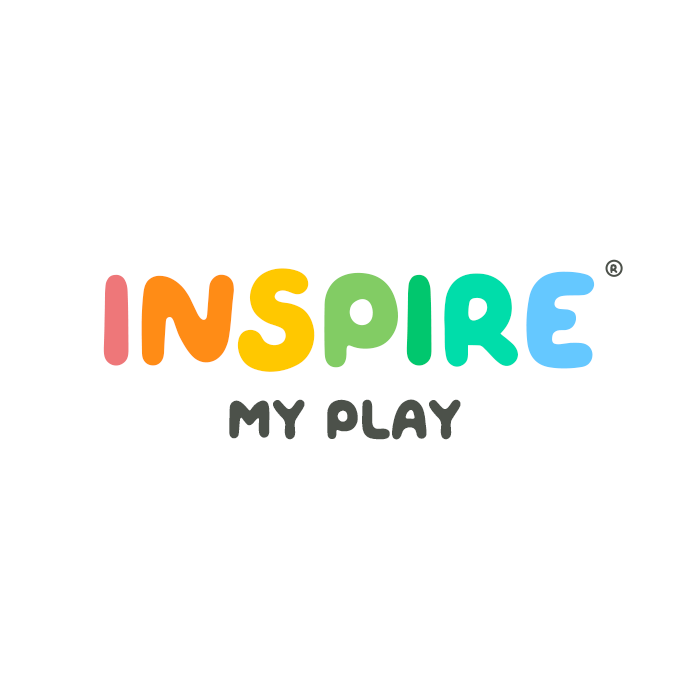The Ultimate Guide to Fine Motor Toys for the First 5 Years

Are you looking for toys and resources that will support the development of those all-important fine motor skills? In this guide I share some of the best fine motor toys and resources to introduce at different ages to help get those little muscles working hard and give kids the skills they need to perform lots of essential every day tasks.

What are Fine Motor Skills?
Fine motor skills are the small movements that children are able to make using muscles in their hands and wrists. They are essential for lots of everyday tasks such as grasping objects, doing up zips and buttons and using tools, such as pencils and scissors. Mastering fine motor skills is no mean feat! It takes time, patience and good concentration, which little ones don't always have a great deal of!
Whilst there are typical milestones for fine motor development (read more about it on the Baby Centre website) do keep in mind that children are all different and acquire skills at different rates. Having said this, if you are particularly worried about your child’s development do talk to your health visitor or other health care provider for a professional opinion.
The good news is that in most cases fine motor development can easily be encouraged through a variety of play experiences. Lots of opportunities for craft, sensory play and time to explore a range of toys that will work on their fine motor skills behind the scenes, are all worthwhile activities.
A Guide to fine motor toys
Over the years we've collected a number of toys and resources that have been great for my kids' fine motor skills, many of which I have featured in this post. This guide to fine motor toys is not exhaustive! But hopefully it gives you a flavour of the types of toys that are going to be great for fine motor skills. Whilst I've selected toys that are typically good for each age group under 5, it may be that your child is not quite ready for some or is indeed ready for more of a challenge. Equally these toys are not for use exclusively at one age, but rather this is about the time I would first introduce them.
Please do note, I have a background in education and am not an occupational therapist! Whilst I imagine that many of these toys and resources are used by them, there may well be more specialised toy choices for those children with specific fine-motor needs.
Each toy listed comes highly recommended but do click through and check out the reviews for further information. As always, do use the knowledge you have of your own child when deciding the most appropriate toys for them to play with.
Fine Motor toys for Babies
In the first year the foundations for fine motor skills are already being laid. Babies as early as 2 or 3 months old are starting to hone their skills as they attempt to bat their toys on a play gym. By 5 or 6 months inquisitive babies are exploring their toys using their whole hand and typically by 12 months they can grip objects between their thumb and index finger.
Treasure baskets
Giving babies a range of toys to explore will set them off on the right path to developing good fine motor skills. Treasure baskets are a brilliant way of doing this. Put simply, a treasure basket is a collection of interesting objects to explore. You can make your own by just collecting up suitable objects from around the house. Alternatively, you can purchase ready-made treasure baskets, like this one from Carla's Treasure which is suitable from 10 months.
Lift the flap books
We all know the benefits of reading for early language development but books are also great for developing fine motor skills in babies and toddlers. Look for ones with lots of flaps to explore and let little ones practise turning the pages as you read. This gorgeous series of books by Ingela Arrhenius have virtually indestructible felt flaps, making them perfect for babies and young toddlers!
Manhattan Skwish
This is a classic first clutching toy for babies and has been a favourite with all of my girls. It's easy for babies to hold and explore and moving the beads back and forwards along the dowels is a great work out for little fingers.
Scarves & o-ball
There are so many ways that play scarves can be fun for babies. One of my favourite is to place them inside an o-ball and let baby figure out how to get the scarves out again by pulling them through the holes. This is a great way of working on hand-eye coordination and hand strength.

Tag toys
Have you ever noticed when you give a little one a soft toy that they often end up playing with the label?! Tag toys like this Taggies one appeal to babies' natural curiosity and encourages lots of exploration using their fingers, which is great practise for developing their pincer grasp.
Fine motor toys for 1 year-olds +
Between the ages of 1 and 2, fine motor skills develop quickly and our emerging toddlers can do increasingly more with their hands such as build towers of blocks, push levers and turn pages of a book. When choosing fine motor toys for one year old's think about toys that involve stacking, posting, balancing or that involve the use of a turning motion. It's also a great time to introduce some early mark making.
Hape Wooden Building Block set
A set of good quality building blocks is a must-have at this stage. They are not only great for imaginative, open-ended play but develop fine motor skills and hand-eye co-ordination as a child learns to balance and build with them.
Aquadoodle
An aquadoodle mat is a great place to start with encouraging early mark making. Aquadoodle mats work by filling a pen with water and then drawing over the mat to reveal the colour underneath. Once it dries the mat can be used again. This one comes with a paint brush for broader strokes and stampers too, which are perfect for younger toddlers.
Rainbow Stacking Rings
This is a classic toy that really helps develop hand-eye coordination, as well as providing the opportunity to explore colours and size ordering.
Wooden Peg Puzzles
Wooden peg puzzles are the perfect first puzzle for children and great for fine motor skills in toddlers. Look specifically for ones with handles to help them grasp them easily. For a unique gift idea for a 1 year-old involving a peg puzzle do check out this instagram post.
Hape Shape Sorter
Shape sorters are a fantastic problem solving toy and brilliant for working on hand-eye coordination. Most toddlers love to post things so this toy will really appeal. I love this one from Hape which has bead-filled blocks for an added sensory experience.
Melissa & Doug stacking train
This toy works on many aspects of development from colour recognition to problem solving skills. It is a great fine motor challenge and I love that the shapes can be stacked in lots of different ways. This toy has lots of play value and I'm sure would be well loved!
Chunky Crayons
Between the ages of 1 and 2 you might like to begin to introduce your toddler to a bit of mark making on paper. Start with chunky crayons as they'll find these easiest to grip. These honey stick crayons are made from 100% beeswax and are non-toxic which is important at this age when everything inevitably ends up in the mouth!
Fine motor toys for 2 year-olds +
Between the ages of 2 and 3 you'll continue to see your little ones refine their movements and show increasing control over their toys. You might find they begin to show a preference for their dominant hand and are starting to hold pencils and crayons with their fingers and thumb rather than their whole hand. Here are some of my top toy recommendations to introduce around the age of 2:
Play dough
There are not many play resources that are better for developing fine motor skills than play dough. Making your own is so cheap & easy (find my no-cook recipe here) but if you don't fancy it or are looking for a gift idea the popular brand play doh have hundreds of brilliant options.
Stickers
Stickers are great to introduce around 2 years-old, though you will be hard pressed to find any that have a manufactures recommendation for under 3's because of their small parts. With close supervision though there is no reason why your 2 year-old can't enjoy them. Start with sheets of stickers and a piece of paper to stick them onto rather than a sticker book which is harder to handle at 2. These picture boards and stickers from Galt are great for little ones. The stickers are also reusable which means you'll get plenty of play from them. A top tip for kids struggling to peal off stickers for themselves is take the sticky backing that surrounds the stickers away and just leave the stickers- it makes it so much easier!
2 piece puzzles
Puzzles are an excellent activity for developing fine motor skills and simple 2 piece puzzles are good to introduce around the age of 2. Orchard Toys are one of our favourite puzzle and game brands and they do the most amazing selection of 2 piece puzzles that cater for lots of different interests.
Duplo
I don't think Duplo needs much introduction! It's a fabulous construction toy which you won't ever regret buying! My 5 year-old still chooses to play with this above lego on many occasions. Construction toys, like duplo, are of course fantastic for building hand strength and fine motor skills, as well as being brilliant for developing creativity and imagination.
Jumbo paint brushes
Taking part in art and craft activities is brilliant for developing good fine motor skills. These paint brushes have been especially designed for small hands to grip and I can vouch for how great they have been for my own kids. If you find the idea of painting with a 2 year-old slightly daunting start by simply giving them some cardboard and water or take them outside to paint the patio with water. They'll still have fun and be working on their fine motor skills, but the clean up will be so much easier!
Fatbrain Tobbles
If you're looking for something a bit different you might like this stacking toy by Fatbrain. Not only is it fantastic for developing fine motor skills and coordination but it presents a great opportunity for learning about size ordering.
Fine Motor Toys for 3 year-olds +
The fine motor tasks facing preschoolers, such as handling cutlery, doing up zips and holding pencils, can present a considerable challenge. Small muscles tire easily and for an energetic 3 year-old exercising the patience that these fiddly tasks require is often a tall order! For this reason there can be a considerable variation between fine motor skills from one child to the next. Paying close attention to your child's interests and choosing fine motor toys and activities that match is the best way of ensuring they work on the strength and dexterity that they need. It may take some time but eventually they will master those more fiddly tasks!
Melissa & Doug Activity Board
This activity board contains a variety of different latches for kids to explore. It's great for finger dexterity and will keep inquisitive toddlers occupied for hours.
My big Day Fabric Activity Book
This gorgeous activity book is a favourite with my girls and absolutely brilliant for working on fine motor skills. There are 10 fun and challenging pages that work on different skills such as zipping, buttoning and tying shoelaces, as well as activities like hanging the washing out on the line and getting dressed. There's plenty to keep a 3 year-old busy but this will also grow with your child and be enjoyed for several years.
Fine Motor Handy Tool Set
I can't recommend this set of tools enough for working on fine motor skills with preschoolers. There are made by the company Learning Resources. We use these all the time alongside sensory play with things such as waterbeads and rainbow rice. You can see lots of ways we've used them over on my instagram account .
Lacing Pictures
Lacing pictures are a great fine motor challenge for this age, as are threading chunky beads onto string or even making pasta necklaces. This activity requires good hand-eye coordination and a steady hand.
Scissor Skills Activity pad
Most little children love the opportunity to use scissors. It can take awhile to master scissor skills so take it slowly, encourage perseverance and celebrate small successes. If your child is struggling, using spring-loaded scissors can help. Before moving on to something like this scissor skill activity pad, practise using scissors with play dough- they'll find this an easier place to start.
Wooden Construction Set
Building with this construction set requires lots of twisting and turning actions which are good for little hands. My girls have always got a lot of enjoyment out of their set and it's been really great for their fine motor skills.
Squigz
These are a really popular construction toy and are often recommended by occupational therapists for improving fine motor skills. The silicone pieces stick together with little suction cups and can also be used on lots of different surfaces including windows and bathtubs.
Fine Motor Toys for 4 year-olds +
Between the ages of 4 and 5 kids are getting to grips with many more tasks demanding good fine motor skills. Amongst other things, their pencil control improves and they learn how to manage many aspects of self-care and hygiene independently. By the age of 5 children will have mastered lots of fine motor tasks and have a clearly established dominant hand. There is of course still much to learn at this stage and they will continue to fine tune their skills throughout childhood and adolescence.
Lego
Lego has to be the ultimate fine motor toy and needs no introduction! There are so many sets catering for every interest and ability. I started my eldest off with a generic building set so that she could explore her own ideas, creativity and imagination before introducing other themed sets.
Tap & Tack
This is such a fun,classic toy and requires careful hand-eye coordination. It is also great for problem solving and reasoning about shapes.
Fingerprint activities
We love this series of fingerprint activity books from Usborne and they are great for fine motor skills. The book is full of lots of fun ideas to create pictures using finger prints. Adding detail using a black pen afterwards is also a great fine motor challenge.
Wooden Bead Kit
Melissa and Doug do a great range of bead kits; some that have bigger beads and holes for younger kids and sets like these that are aimed at slightly older children. The beads are smaller, as are the holes, which provides a fantastic fine motor challenge for 4 year-olds and up.
Octons
This is another great construction toy that will work all those finger muscles and is brilliant for hand-eye coordination.
Hama Beads
Hama beads are such a great fine motor activity! These little beads are placed onto peg boards to create a design of your choice. To make the design permanently fused you simply iron it. We have a huge tub of these and end up using them for all sorts of activities. You can see one example here.
Craft Punches
Craft punches are great for strengthening little hands and a great resource to add to your art and craft supplies. See this instagram post for an idea of how we've used punches like these.
Loom Bands
The craze for loom bands might be waning slightly but they are brilliant for working on fine motor skills. It might take awhile for your 4 or 5 year-old to get the hang of these but once they are off, if they're anything like my eldest daughter they'll be hooked!
Magnatab
We don't actually own a magnatab but I've seen them at Miss 3's preschool and they look such fun. The stylus is magnetic and when you move it over the letters little metal beads pop up with an audible click. The beads are completely self-contained and won't come out, and are easily pushed back in with the bottom of the stylus or a finger. This is such a clever way of introducing letter formation to little ones who are reluctant, or not quite ready, to put pen to paper. You can also buy a plain board, capital letters or cursive script board.
And that's it for our favourite fine motor toys and play resources! If you found this guide helpful please pin it for later reference and do check out our other toy and resource guides on inspiremyplay.com.












